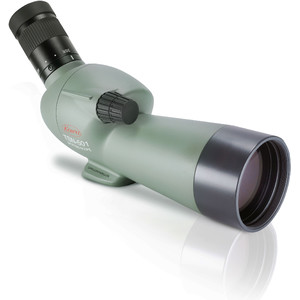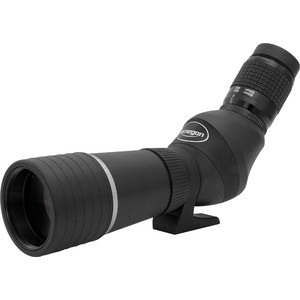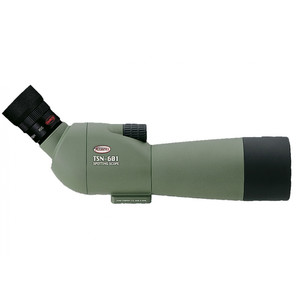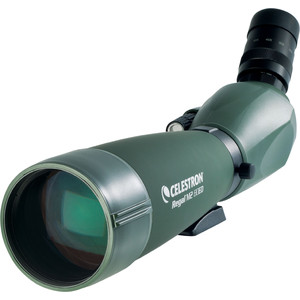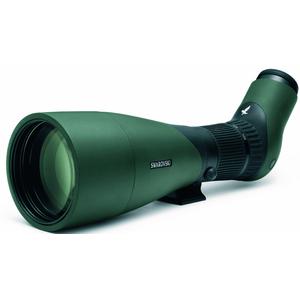Spotting scopes
Spotting scopes are compact telescopes providing high magnification for long-distance observation. But what else do I need to know?
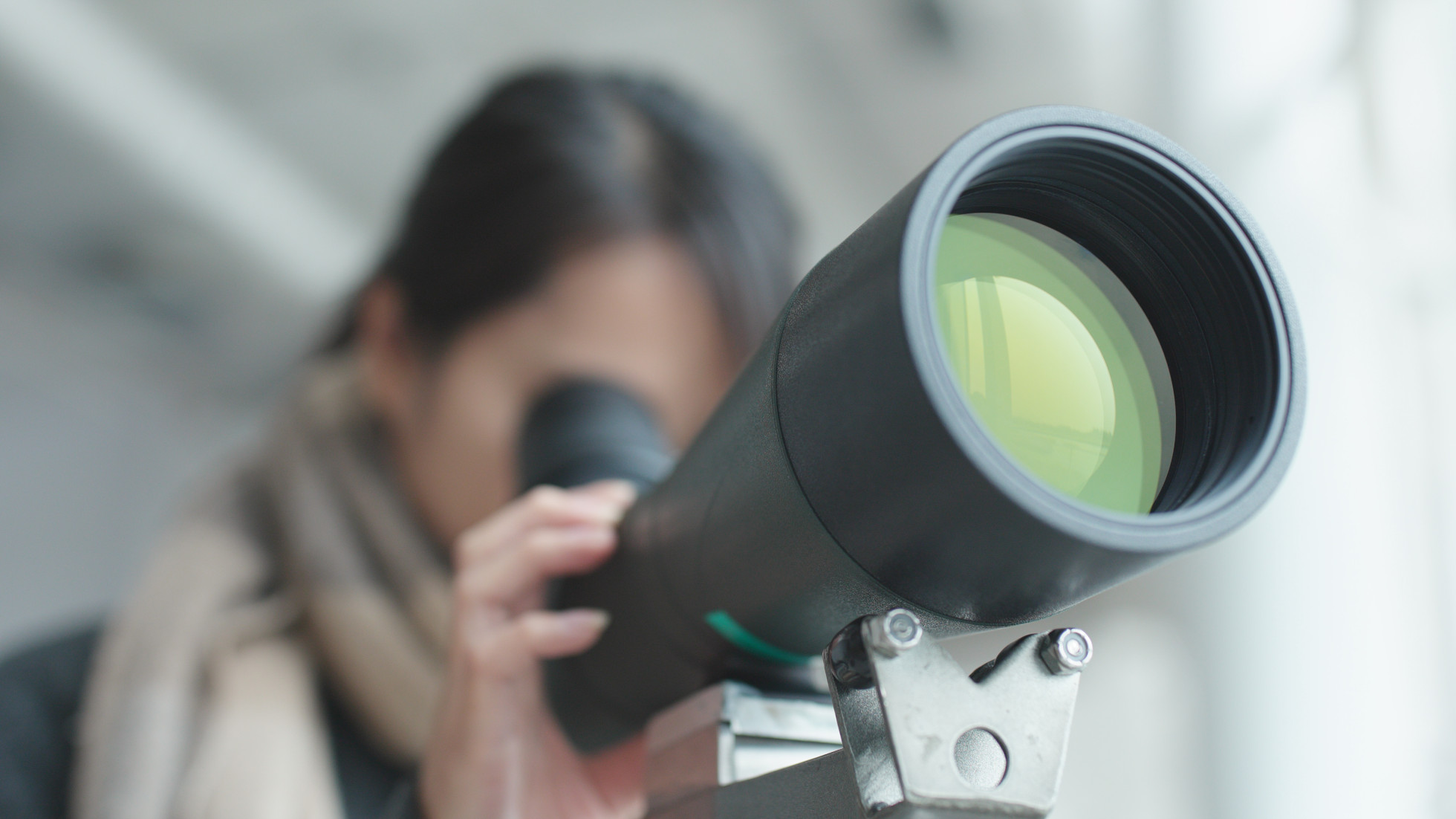
What is a spotting scope?
A telescope with high magnification. Applications include observing at long distances and looking at details at medium distances (e.g. for observing targets in shooting sports or for tracking game when hunting).
Spotting scopes are monocular telescopes with magnifications of between around 20 and 80 times, depending on the eyepiece used. They are therefore always used for long-distance observing, or for nature watching across large open areas. The classic field of application is at large expanses of water. A spotting scope is ideal for observing slower moving objects, such as swimming ducks, geese, diving birds, seagulls, cormorants or other waterfowl. Due to the high magnification, the field of view is quite small.
However, the optics make it possible to see details that would be missed with binoculars: how big is the white spot on the outermost (tenth) primary feather of the gull swimming around 400 or 500 m away from me? Is that a yellow-legged gull, or is it a Caspian gull? Maybe it will lift a stretched leg out of the water while grooming itself, and you can see if it's pale yellow or an intense yellow colour. Is the head pure white, or do you see dark streaks on the neck? Modern optics with coated lenses allow you to solve such identification questions that would have previously remained unresolved.
The beauty of nature watching with a spotting scope is that you can keep your distance from the animals you are observing, and so you don't have to disturb them. It would be irresponsible to try to observe rare birds of prey such as white-tailed eagles, golden eagles, or peregrine falcons in their eyrie if you were only equipped with conventional binoculars. From a greater distance (> 1,000 m) you won't disturb them and so can still participate in the family life of these interesting large birds, because you can still observe their comings and goings at the nest in detail.
What do the numbers on the spotting scope mean?
You will usually find two numbers on your spotting scope, for example 40x62 or 15x50. The first number is always the magnification, the second is the diameter of the lens in millimetres. A scope with the specification 40x62 magnifies 40 times and the lens (the spotting scope’s aperture) has a diameter of 62 millimetres. The magnification factor of 40 means that you see a bird 40 metres away from you as if it were just a metre away.
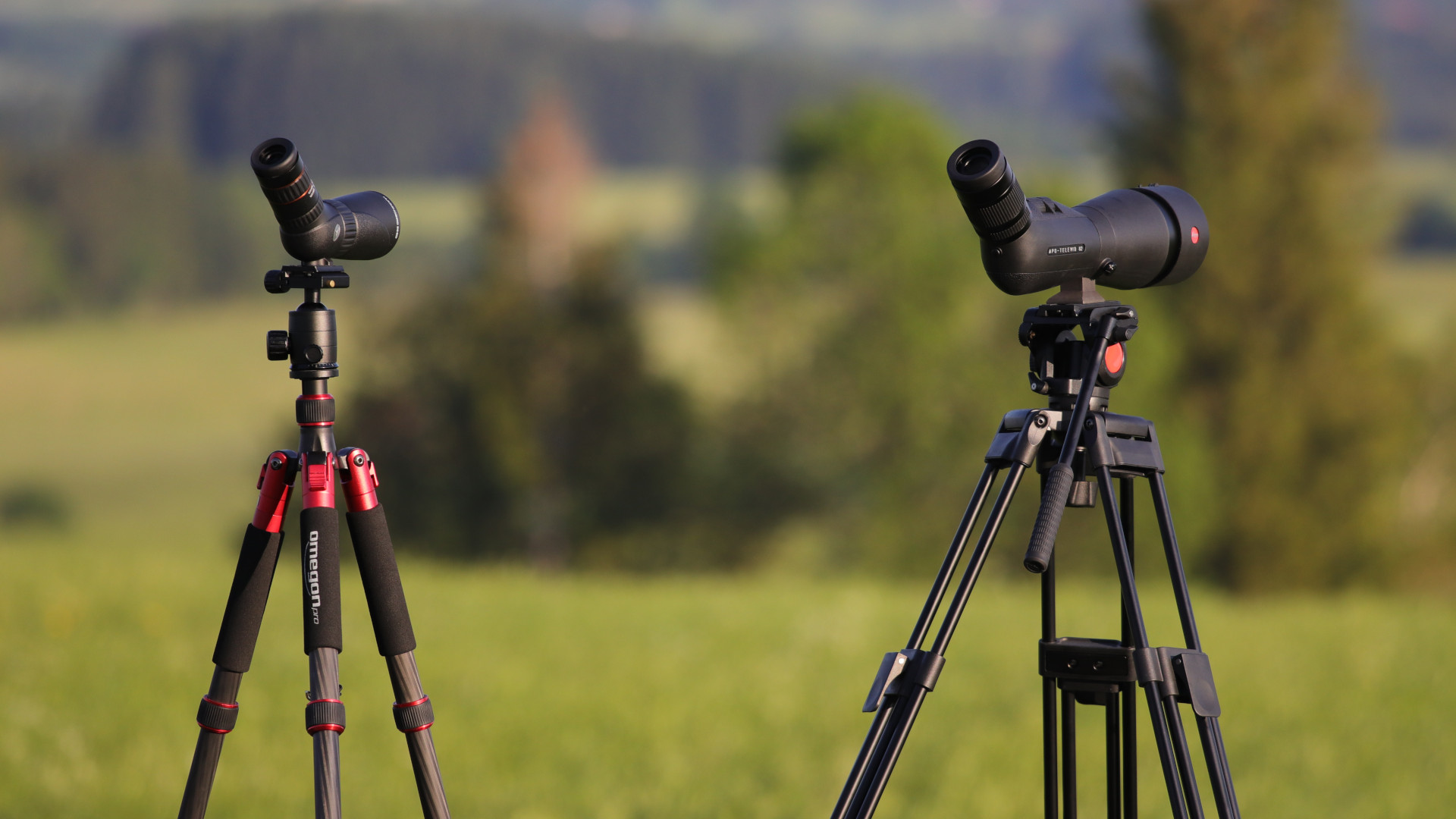
What magnification is usual for a spotting scope?
- Typically, 30 times is common for a fixed magnification, while variable magnifications range from 15 to 60 times
- It is easier to first find the object with a small magnification, and then examine it in detail with a higher magnification
What should I particularly watch out for when choosing a spotting scope?
An important criterion when buying a spotting scope is its light-gathering power. The main indicator of how powerful an instrument is, is the objective lens diameter, i.e. the specification’s second number. If you're going to be out and about in changeable light conditions, you should opt for a spotting scope with a lens diameter of at least 80 mm. The larger the lens, the more light will enter the scope.
However, the light gathering capability also depends on the quality of the glass used and the coating, but above all on the magnification you choose. Higher magnification "costs" light, i.e. the image becomes darker the higher the magnification you select.
How much do I need to spend on a good spotting scope?
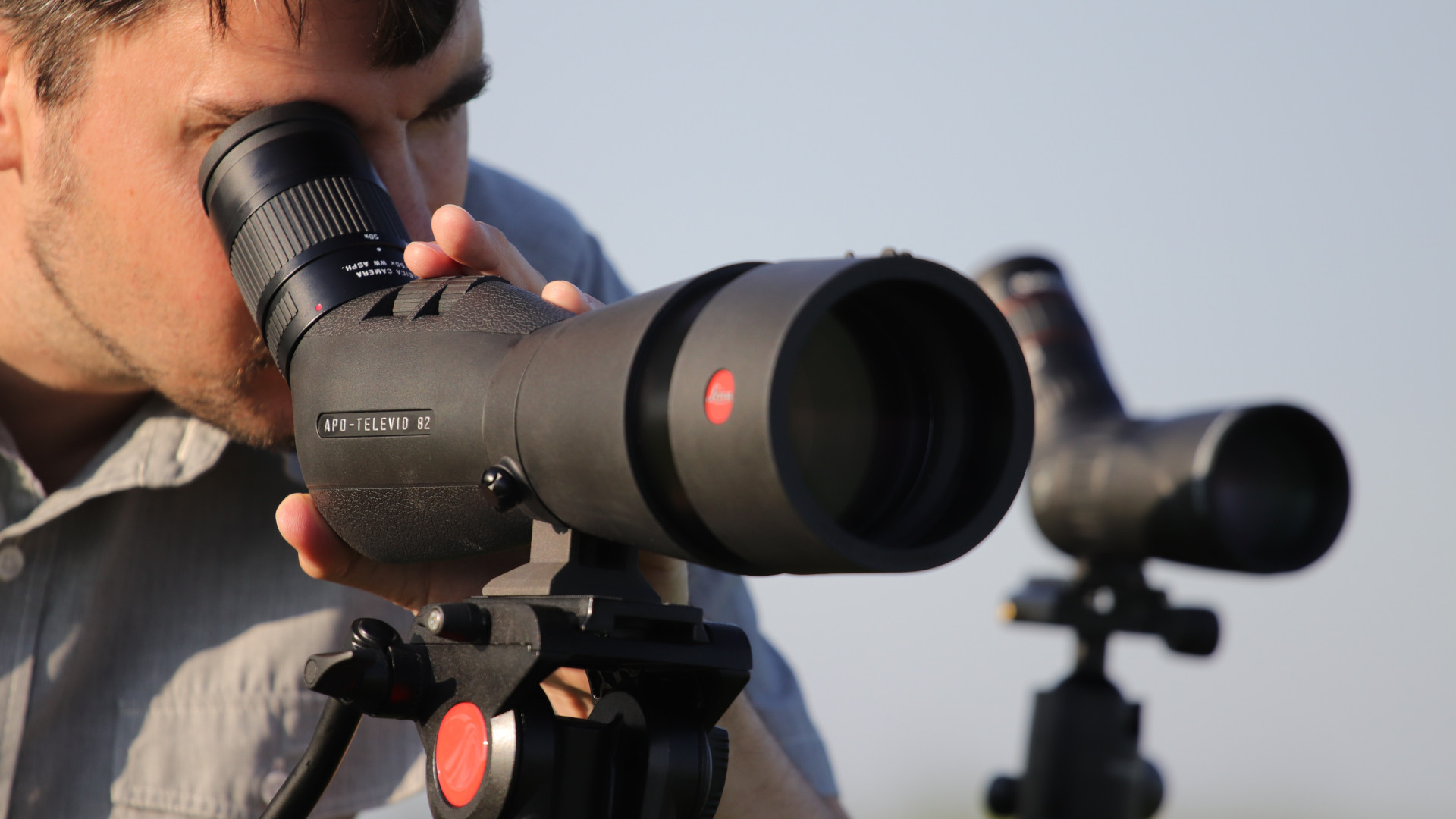
The same principle applies here as for all other sophisticated devices: if you want a top-quality instrument, you should not be afraid to invest your money in a scope from a high-end brand such as ZEISS or Swarovski. Such instruments will cost from €1,500 to well over €2,000, but these will last you a lifetime. Anyone who knows that they will mostly use their spotting scope outdoors in changeable weather conditions is well advised to not make false economies when buying.
For beginners who do not yet know whether bird watching is going to become a lifelong passion, it is sufficient to buy a medium-quality instrument that provides excellent daytime results when the sun is shining, but still delivers good or satisfactory results under cloudy skies. Such spotting scopes are available in the range of around €200 to €500.
As always, when buying it is crucial to consider how, when, and how often you will use the scope. As a comparison, think of driving a car: the field sales representative who covers 100,000 kilometres a year, will invest far more in his vehicle than someone who only drives occasionally, and who may decide to buy a more reasonably-priced car that is still technically sophisticated and reliable, but which would perhaps not be the first choice for a long-distance driver.
What accessories do I need for my spotting scope?
Most people are able to hold binoculars with 10 or 12 times magnification in their hands and still keep them steady and not shake. However this is out of the question with a spotting scope with its much greater magnification. Here you will definitely need a tripod, on which the scope can be mounted in such a way that it can be moved in all directions. Whether you prefer a technically more sophisticated ball head or a pan and tilt head mount is actually less important. It’s best to try both out, and decide which system you prefer to work with.
Both systems naturally offer the possibility to lock the scope in place once the focus has been set. This is useful if you want to observe an interesting bird for a longer period of time, or share your discovery with a companion. ("Take a look through my scope, I've lined you up with a red-necked grebe!"). In most cases, a single hand movement is all that is needed to release the lock and the scope can be panned and tilted again, e.g. when the observed waterfowl suddenly flies away or simply floats out of the field of view. Good metal tripods are available at prices starting from around €50; ball heads or tilt heads cost between €30 and €50.
Another important factor is weight. Wooden tripods are very stable, but heavy. They are particularly suitable for static use, even in water. Metal, especially aluminium, combines low weight with high stability (important in windy conditions!). Anyone who has to carry their scope and tripod over longer distances is certainly grateful for every gram of weight they can save. The ultimate in this respect are carbon fibre tripods, which are also considerably more expensive.

Why do many bird watchers use binoculars in addition to their spotting scope? Isn't one or the other enough?
No, a spotting scope’s purpose is different to that of binoculars. Serious observers are therefore often to be seen with both. Binoculars, with their relatively large field of view, are suitable for scanning the sky or, for example, inspecting a forest edge or a stretch of water to first see if there are any interesting birds there. They are therefore used for orientation. If the distances are small, or you are in a closed landscape such as a forest or scrubland, binoculars are often all you need.
However, once you discover an interesting object to observe, especially in an open landscape, it can be really worthwhile to take a closer look at it with a highly magnifying spotting scope, to examine it in more detail.
Of course, you can also use a spotting scope to track birds on the move. However, this requires a little more practice due to the smaller field of view; it is not so easy to keep a fast-moving bird in view when tracking it with a spotting scope. However, the more often you practice, the better you will become at finding a bird in the sky or tracking a flying bird, and as you become more familiar with handling your instrument it will become second nature. It’s similar to driving a car: the beginner glances down at the gear lever when changing gear in order to look for the correct gear, the more experienced driver changes gear automatically. Please also see our FAQs on bird watching.
What do the abbreviations HD and ED mean on a spotting scope?

The quality of a spotting scope depends on many factors. In addition to the number of lenses, the surface coatings, the lens mountings, the housing material and the construction of the eyepieces, the type of glass used is an important consideration. High-quality scopes often use special glasses containing fluoride with specific refractive properties. These lenses are complex to manufacture and difficult to machine, but they deliver significantly better results in terms of colour and field correction than optics made from normal glass.
Spotting scopes made of simple glass have blue fringing above 30 times magnification, whereas optics with special glass generally remain pure-colour up to 60 times magnification. Brands in the high-end segment such as ZEISS, Swarovski, Leica, Optolyth and Kowa-Prominar often use special glass without mentioning it. Meanwhile, however, even mid-range brands such as Leupold, Omegon, Meopta, Minox, Celeston, Meade, Vixen, Nikon and a few other manufacturers include spotting scopes with special glass in their product ranges.
To distinguish these models from the standard glass variants, manufacturers often use the abbreviation HD for high-definition glass and ED for extra-low dispersion glass. Optics with ED/HD glass deliver significantly better quality, but are also significantly more expensive.

